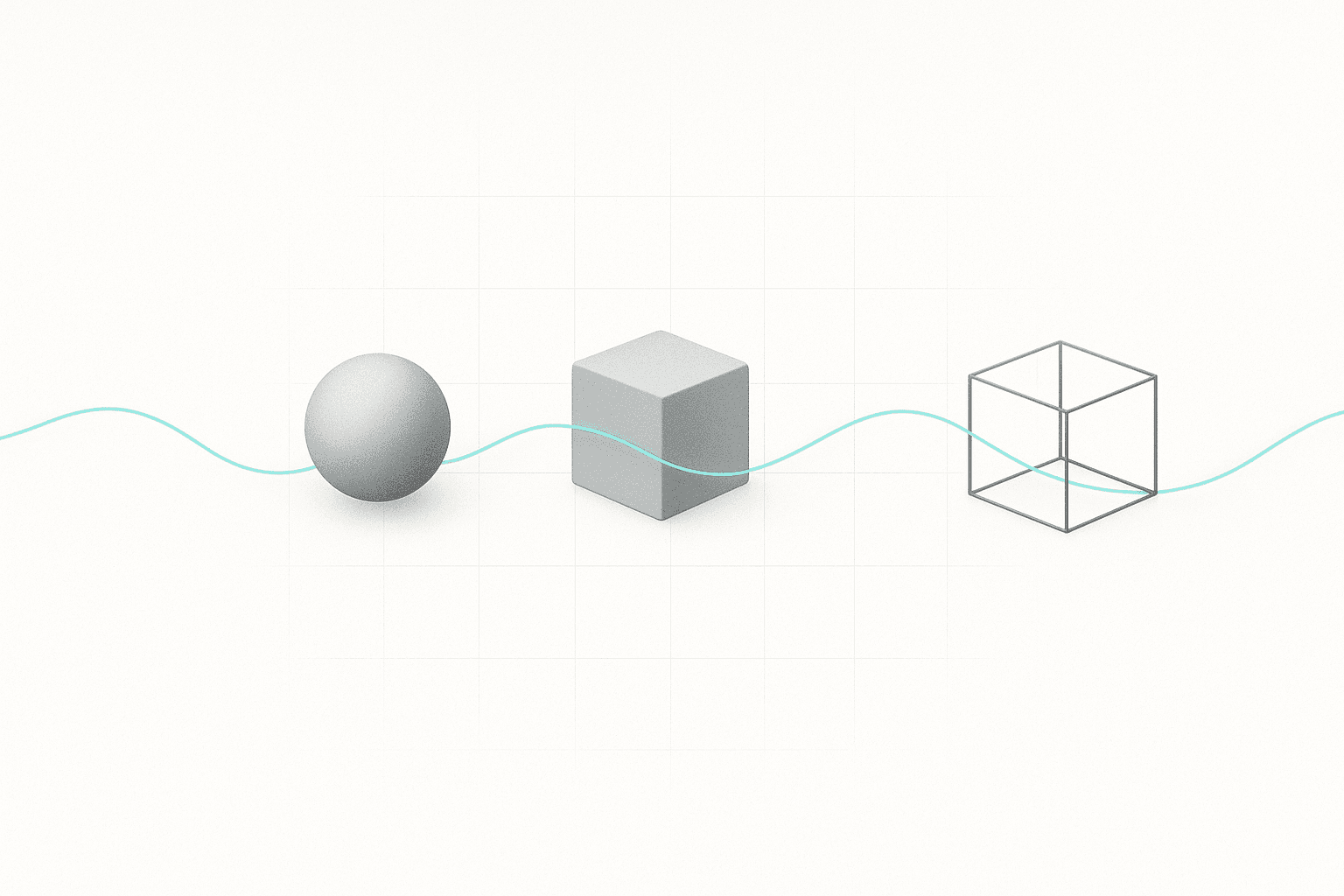Netsuite Integration with Shopify: Guide for Enterprise eCommerce (2025)
For enterprise eCommerce brands scaling on Shopify, growth often brings fragmentation. As order volumes rise and operations scale across warehouses, finance teams, and channels —manual processes start to crack.
Many businesses still manage storefronts and back-office systems separately. Without ERP integration, teams spend hours reconciling data between Shopify and NetSuite, slowing down decisions and increasing the risk of error.
According to NetSuite ERP benchmarks, integrated systems improve operational efficiency by up to 66%, primarily by reducing manual work across departments and ensuring real-time data flow between platforms.
If you're exploring Shopify NetSuite integration, you're likely aiming to:
-
Accelerate the order-to-cash cycle
-
Eliminate inventory discrepancies
-
Streamline financial close processes
This guide walks through:
-
Core data flows between Shopify and NetSuite
-
Integration methods: connectors vs custom architecture
-
Real-world enterprise implementation examples
-
Best practices to avoid costly deployment mistakes
Whether you're preparing for your first ERP rollout or fixing a fragmented tech stack, this guide will help you build an integration strategy that scales.
Operational ROI: Where Shopify NetSuite Integration Pays Off
When Shopify and NetSuite operate without structured integration, most teams rely on point-to-point exports, partial connectors, or internal workarounds. That patchwork introduces silent costs not because the tools lack capability, but because they don’t coordinate where it matters.
The business case for integration is clearest in the workflows that carry the highest operational and financial variance: fulfillment logic, inventory availability, and finance alignment.
Operational Leverage in Multi-Variant and Bundled Catalogs
For brands with complex product configurations — kits, bundles, pre-orders, or customizations — Shopify's order data often lacks the fulfillment and cost logic required for accurate processing in NetSuite.
Without integration:
-
SKU bundles must be manually broken down for fulfillment.
-
Costs associated with each line item are misaligned at the ERP level.
-
Pre-order logic and ship windows get lost between systems.
With integration:
-
Bundle and variant relationships pass cleanly into NetSuite as assembly items or kits.
-
Cost of goods sold is calculated correctly at the item level, not at the bundle.
-
Custom ship dates and pre-order rules sync into fulfillment plans without manual entry.
This reduces mispicks, improves margin accuracy, and removes the need for post-shipment reconciliation or inventory corrections.
Inventory Governance Across Locations and Channels
Disconnected systems force teams to inflate safety stock, delay backorders, or centralize fulfillment, all of which reduce profitability per unit sold.
With integrated inventory logic:
-
Stock updates flow from NetSuite to Shopify on configurable intervals or event triggers.
-
Location-based availability, including warehouse splits or region restrictions, syncs natively.
-
NetSuite ATP (Available to Promise) and committed inventory levels feed Shopify’s storefront logic.
This allows businesses to reduce excess stock, offer more aggressive delivery promises, and limit oversells without increasing ops overhead.
Finance and Tax Accuracy Across Order States
Shopify orders can include mixed tax rules, multi-currency payments, edits after placement, and partial refunds. Without integration, these details require manual entry or spreadsheet intervention — especially when trying to maintain clean ledgers inside NetSuite.
A proper integration ensures:
-
Tax calculations, promo logic, and final charges reflect accurately in NetSuite’s AR module.
-
Partial refunds or exchanges are tied to original order IDs and retain their tax and currency metadata.
-
Payment gateway details (Shopify Payments, Stripe, others) map cleanly into cash reconciliation workflows.
By addressing these workflow gaps, integration does more than connect platforms. It enforces process reliability across systems that were never designed to speak to each other natively. The result is higher confidence in margins, cleaner fulfillment execution, and fewer exceptions in every reporting cycle
What Gets Integrated: Core Data Flows Between Shopify and NetSuite
Shopify-NetSuite integration typically covers four high-priority data flows: orders, inventory, customers, and finance. These flows can run one-way or bidirectionally depending on architecture choices, but the goal is consistent, event-driven updates across systems with minimal manual intervention. Events such as order creation, fulfillment, or stock adjustments typically act as sync triggers.
Sales Orders and Fulfillment
Orders placed in Shopify convert into NetSuite sales orders based on configured triggers — usually at the point of order placement or payment authorization. The integration supports multiple order types, including one-time purchases, subscriptions (as recurring one-time orders or mapped to NetSuite’s recurring billing modules), and B2B transactions with fields like PO numbers, customer terms, and approval workflows.
Once an order is fulfilled in NetSuite or an integrated WMS, the fulfillment status and tracking information sync back to Shopify. For partial shipments, the sync logic can be configured to either update item-level status or wait until full completion, depending on your business rules.
Inventory and Product Catalog
NetSuite typically acts as the system of record for product and inventory data. SKU-level attributes like stock availability, descriptions, dimensions, and warehouse assignments sync to Shopify either in real time or on a scheduled cadence.
For businesses that manage virtual kits or bundled SKUs in Shopify, integration logic must reconcile these with NetSuite’s assembly item structure, which tracks component-level fulfillment and costing.
Fast-moving SKUs often require real-time stock sync, while slower-moving items can be scheduled. Multi-location routing, availability by region, and backorder rules can be embedded into the integration flow to support scale.
Customer and Account Data
Customer data syncs can be configured one-way or bidirectionally depending on the source of the truth. Typically, Shopify creates the customer record, while NetSuite enriches it with historical order data, segmentation tags, payment terms, and account-level attributes.
In B2B use cases, the integration maintains customer hierarchies — such as a parent account with multiple ship-to locations and billing contacts — via NetSuite’s native entity structure. Shopify references this data using tags or metafields, or via Shopify B2B capabilities.
Financials: Tax, Payouts, Refunds
Shopify’s tax data is generally passed to NetSuite as-is to preserve storefront-calculated accuracy. In advanced environments, NetSuite (or third-party tax tools like Avalara) may override or recalculate based on jurisdictional rules.
Refunds initiated in Shopify generate return authorizations or credit memos in NetSuite, complete with item-level breakdowns, reason codes, and tax treatment.
Payment gateway data from providers like Shopify Payments or Stripe is mapped to deposit records within NetSuite to support bank reconciliation. Revenue recognition schedules can be configured in NetSuite to defer recognition based on fulfillment events or delivery windows.
| Data Flow Category | Trigger Event in Shopify | NetSuite Action | Sync Direction | Typical Frequency |
|---|---|---|---|---|
| Orders | Order placed or paid | Create Sales Order (SO) with terms, PO fields, B2B flags | One-way (Shopify → NetSuite) | Real-time or event-driven |
| Fulfillment | Item shipped in NetSuite | Update order status and tracking in Shopify | One-way (NetSuite → Shopify) | Real-time |
| Inventory | Stock change in NetSuite | Sync updated stock, availability, and warehouse info | One-way (NetSuite → Shopify) | Real-time or scheduled |
| Customers | New account/order in Shopify | Create/update customer record with segmentation, company structure | Bidirectional (configurable) | Real-time or batch |
| Financials | Refund, payout, or tax logic applied | Create credit memo, update revenue schedule, or sync deposits | One-way (Shopify → NetSuite) | Scheduled (daily or batch) |
Integration Approaches: Prebuilt Connectors vs. Custom Build
There are three primary paths to integrating Shopify and NetSuite: prebuilt iPaaS platforms, fully custom API integrations, and hybrid low-code solutions. Each comes with distinct tradeoffs in speed, flexibility, maintainability, and long-term cost.
Prebuilt Integration Platforms
Platforms like Celigo, Pipe17, and Jitterbit offer pre-configured connectors for Shopify–NetSuite integration. They enable rapid deployment using standardized workflows for orders, fulfillment, inventory, and customer sync, all covered in the previous section
These platforms enable deployment in 2–4 weeks under typical conditions. Most offer UI-based field mapping, error handling dashboards, and support for retry logic — making them accessible to non-developers.
What to know:
-
Custom requirements such as split payment reconciliation, dynamic discount logic, or bundle-to-assembly item mapping usually require vendor-side scripting or expensive add-on modules.
-
Field constraints and sync limits may restrict flexibility (e.g., 1:1 field mappings, hardcoded sync intervals).
-
Licensing costs can grow significantly as workflows, environments (sandbox vs. production), and transaction volumes increase.
Prebuilt is ideal when 80% of your workflows match standard eCommerce logic — single-location fulfillment, fixed tax rules, simple SKU models — and the goal is speed to market, not architecture control.
Custom Middleware and API Solutions
Custom builds use NetSuite’s SuiteTalk or RESTlets and Shopify’s REST or GraphQL APIs to create fully tailored sync pipelines. These are typically built using serverless functions, ETL tools, or standalone Node/Java middleware.
This path offers maximum control:
-
Conditional logic based on SKU, channel, or order tags
-
Multi-system joins (e.g., Shopify + WMS + NetSuite)
-
Dynamic field transformations and nested object creation
-
Custom sync timing based on business events, not static schedules
What to know:
-
Requires dedicated developers familiar with both APIs
-
Common pain points include token management, webhook retries, API rate limits, and schema changes between platform versions
-
Long-term maintenance costs are tied to your internal team's ability to monitor and evolve the logic
-
There's no vendor support. Every change, patch, or exception is your responsibility
Custom is a strong fit when:
-
Your business logic doesn’t fit within prebuilt boundaries
-
You operate with pricing tiers, virtual kits, or multi-region fulfillment logic
-
You need orchestration across multiple systems beyond Shopify and NetSuite
Low-Code and Hybrid Approaches
Hybrid integration platforms offer a middle path. Tools like Celigo with scripting, Boomi Flow, or Tray.io combine drag-and-drop workflows with embedded scripting environments.
This approach combines prebuilt logic for primary data flows with custom scripting for edge cases, offering a controlled path from quick launch to deeper functionality.
What to know:
-
Setup time is faster than full custom builds but slower than prebuilt-only connectors
-
You still need technical support to maintain custom scripts
-
Ideal for teams who want to “start with standard, evolve into complex” without re-platforming
Hybrid makes sense for businesses that are scaling fast, anticipating complexity, but need to get live quickly without cornering themselves into a rigid iPaaS box.
Choosing Based on Operational Maturity
| Scenario | Best Fit |
|---|---|
| Rapid go-live with standard workflows | Prebuilt connector (e.g., Celigo) |
| Complex logic: bundles, partial refunds, multi-node sync | Custom middleware |
| Need for both speed and flexibility | Hybrid low-code platform |
If your integration touches only Shopify and NetSuite, and your flows follow conventional logic, prebuilt may be enough. But if you're routing inventory through 3PLs, managing dynamic pricing tiers, or syncing data across CRM, ERP, and OMS — you'll need deeper control.
Not sure which integration model fits your stack? We’ve implemented NetSuite–Shopify integrations across retail, DTC, and manufacturing brands. Book a 20-min consult → enquiry@coderapper.com
Key Technical Considerations for Shopify–NetSuite Integration
Below are the non-negotiable technical layers that must be addressed to avoid sync failures, operational blind spots, or compliance risk at scale.
API Constraints and Throughput Strategy
Shopify and NetSuite both enforce strict limits that cap how fast data can move.
-
Shopify Admin API: Typically limited to 4 requests per second, plus burst via leaky bucket; GraphQL queries count differently based on complexity.
-
NetSuite SuiteTalk (SOAP): Governed by usage units—each operation consumes credits, often variable based on field volume and custom logic.
What to do:
-
Use delta syncs, not full table pulls.
-
Batch updates for catalog and inventory.
-
Monitor API usage headers and NetSuite governance units in real-time.
-
Apply rate-aware queuing with intelligent retry buffers.
If your product catalog is 100K SKUs or you're processing 10K orders/day, hard limits will break naive syncs. Design around thresholds from day one.
Data Model Translation and Normalization
Shopify flattens product variants; NetSuite enforces strict hierarchy via matrix and assembly items. Field compatibility is rarely 1:1.
Solve for:
-Variant resolution: Decide whether to flatten into individual SKUs in NetSuite or enforce matrix logic across both platforms.
-
Field types: Normalize currencies, booleans, date formats, and tax code structures.
-
Custom fields: Use extensible fields via metafields (Shopify) and custom segments (NetSuite), but map explicitly—platform assumptions vary.
Every mismatch you leave untreated becomes a sync failure, or worse, a silent reporting error.
Sync Prioritization and Trigger Logic
Not all data needs to move at the same speed. And not all systems should trigger updates.
| Data Type | Trigger Mechanism | Sync Frequency |
|---|---|---|
| Orders | Shopify webhook → NetSuite | Real-time |
| Inventory | NetSuite event or interval | 5-min to hourly |
| Fulfillment Status | NetSuite ship confirm → Shopify | Event-driven |
| Refunds | Shopify return event → NetSuite | Real-time |
| Product Catalog | Scheduled NetSuite jobs | Daily or on publish |
| Customer Data | Shopify create/update → NetSuite enrich | Hybrid |
Tip: Avoid race conditions by enforcing directional sync logic. For example, if both Shopify and NetSuite can update the product title, you need a clear source of truth or merge policy
Your integration handles normal traffic. Black Friday will test if it survives 10x volume in 48 hours.
Observability and Sync Failure Handling
You don’t just want to know if a sync failed—you want to know what, where, why, and who should care.
Implement:
-
Correlation IDs: Trace an order across Shopify order ID → NetSuite SO ID → fulfillment ID.
-
Structured logging: Capture event type, payload size, API response, and retry logic.
-
Failure tagging: Classify errors: transient (retryable), permanent (manual), schema (dev).
-
Operational visibility: Push errors into Ops dashboards or Slack alerts—not buried in logs.
Skip this, and your next refund or shipment error could go undetected for days.
Tax, Gateway, and Revenue Handling
Shopify calculates tax at checkout. NetSuite can either honor that value or recalculate based on internal rules or Avalara/TaxJar integrations.
Key questions to resolve:
-
Do you preserve Shopify’s tax as ground truth?
-
Or let NetSuite override based on customer location, tax-exempt status, or nexus logic?
For revenue and payment:
-
Ensure Shopify Payments/Stripe/PayPal payout records are mapped to NetSuite deposit transactions to match settlement dates, fees, and FX differences.
-
Use NetSuite's deferred revenue recognition module for services, subscriptions, or partial delivery items.
Real-World Implementation: How Brands Actually Integrate NetSuite and Shopify
No two Shopify-NetSuite integrations are the same. Below are verified implementations from enterprise brands solving complex operational bottlenecks like fragmented POS data, return reconciliation, inventory blind spots, and multi-brand logistics.
Case 1: Milligram: POS Loyalty, Unified Order History
Milligram connected Shopify POS with NetSuite to consolidate loyalty programs, order history, and in-store behavior.
Integration Stack:
-
Shopify POS - NetSuite ERP
-
Loyalty workflows and customer profiles mapped in NetSuite
-
Real-time in-store order capture into ERP
Operational Impact:
-
32% YoY revenue growth (FY23)
-
16% in-store revenue lift via omnichannel insights
-
Loyalty data unified across online/offline without custom CRM stitching
This is a clean example of POS and ERP integration used not just for transactions, but for relationship-level data continuity. Loyalty programs aren’t just layered on top, they’re embedded into operational systems.
Case 2: Good American: Real-Time Omnichannel Orchestration
Good American unified online and retail order data inside NetSuite to power inventory accuracy and campaign coordination.
Integration Stack:
-
Shopify POS + Shopify eCommerce
-
NetSuite as single data hub for orders, inventory, returns
-
Sync logic to ensure real-time product availability and discount alignment
Operational Impact:
| Capability | Implementation | Result |
|---|---|---|
| Cross-channel sync | Orders across online/POS | 91.69 NPS in retail locations |
| Inventory accuracy | Stock visibility everywhere | 20% reduction in returns |
| Promotions | Unified campaign timing | Simultaneous online + store promo launches |
This is the blueprint for brands moving from “channel management” to channel orchestration. without spreadsheets or dual setups.
Case 3: Bared Footwear: Inventory & Customer Reconciliation
Bared Footwear eliminated reconciliation gaps across store and online orders. Ensure SKU-level visibility across all channels.
Integration Stack:
-
Shopify eCom + physical stores
-
NetSuite as central order + inventory engine
-
Customer profile sync to ensure loyalty/account-based tracking
Operational Impact:
-
4% of store orders shipped-to-customer via hybrid fulfillment
-
Manual reconciliation eliminated
-
Same stock visibility across all sales channels
This is inventory truth in action, not patchwork of Excel exports and manual adjustments. You get traceable, channel-agnostic inventory logic that scales.
Case 4: Cozy Earth: Multi-Brand Fulfillment Without Duplication
Cozy Earth manages logistics and returns across multiple brands (Cozy Earth + Fount Society) without SKU duplication or reconciliation issues.
Integration Stack:
-
Shopify Collective (shared storefronts)
-
NetSuite for financial automation, inventory sync, and returns
-
iDrive Logistics for fulfillment and routing logic
Operational Impact:
-
Auto-payment reconciliation between brands
-
Inventory pooled across storefronts
-
Return flows managed at SKU-level without fragmentation
This case shows how NetSuite became the backbone for multi-brand setups. A single control center with intelligent routing and SKU integrity.
Want to see how your setup compares? We’ll benchmark your current flow against industry-ready architecture models and identify top risks + missed automation. Request a free integration audit → enquiry@coderapper.com.
NetSuite integration is one piece. Our BFCM guide covers what else breaks under holiday traffic and how to prevent it.
Best Practices for Deployment: How to Ensure a Smooth Rollout
Pre-Integration Audit: Clean Before You Connect
Data Structure & Mapping
-
Inventory SKUs: Standardize naming conventions. Eliminate duplicate records across Shopify and NetSuite.
-
Customer Records: Merge fragmented identities. Map guest checkouts to CRM logic if needed.
-
Custom Fields: Document field logic (e.g., NetSuite’s “Location” vs Shopify’s “Warehouse Tag”) to avoid sync conflicts.
Integration Readiness Scorecard
-
Is your SKU architecture normalized across channels?
-
Are payment methods and tax rules mirrored across systems?
-
Are teams aligned on what success looks like post-launch?
If the answer to any of these is “we’re not sure”, pause.
Stage, Simulate, Stress-Test
Mirror Production in a Staging Environment
-
Clone NetSuite workflows: approvals, fulfillment rules, custom scripts
-
Sync to a Shopify sandbox with realistic test data (orders, SKUs, customers)
-
Simulate real order volume — not just “happy path” scenarios
Test What Can Break
| Scenario | Must Cover |
|---|---|
| Multi-tender orders | Credit + gift card or POS cash |
| Inventory oversells | Threshold alerts + resolution flow |
| Return/cancellation edge cases | Refund sync + RMA logic |
| Financial reconciliation | ERP general ledger mapping |
| Latency handling | Timeout triggers + retry behavior |
Go-Live Ops: Monitor, Retry, Escalate
Real-Time Monitoring Must-Haves
-
API success/failure rates per integration type
-
Sync queue backlog tracking (especially for inventory + orders)
-
Alerting thresholds by priority (e.g. 5+ failed orders = immediate incident)
Intelligent Retry Logic
-
Auto-retry transient failures (timeouts, rate limits)
-
Isolate persistent failures for human triage (e.g. data mismatch)
-
Implement exponential backoff to avoid API throttling loops
Post-Launch Playbook
-
Daily health checks for first 14 days
-
Weekly sync audits: inventory parity, order count match, revenue alignment
-
SLA-based response plans for fulfillment or payment sync delays
This integration is an enterprise operations upgrade. If you treat this like a one-off middleware deployment, it will break. If you deploy like it’s your brand’s nervous system? It scales.
Common Shopify–NetSuite Integration Challenges (And How to Solve Them)
Even with modern middleware and playbooks, some issues still derail otherwise well-planned integrations. These are the ones worth watching:
1. Variant Mismatches and Inventory Drift
What Happens: Shopify’s flexible product-variant model doesn’t cleanly map to NetSuite’s matrix item structure. This often leads to duplicate SKUs, orphaned variants, and inaccurate stock.
What to Do:
-
Normalize SKU logic before integration - especially for bundles and kits
-
Define master inventory authority (NetSuite or Shopify, not both)
-
Use transformation logic in middleware to flatten variant structures during sync
2. Refunds and Tax Calculations Don’t Line Up
What Happens: Shopify calculates tax at checkout; NetSuite calculates it at order accounting. Refunds sometimes sync out of sequence, or with mismatched amounts.
What to Do:
-
Map tax codes one-to-one before go-live
-
Sync refund events via webhook, not batch jobs
-
Use a transaction status flag to reconcile refund state between systems
3. Sync Failures During High Volume, and No One Notices
What Happens: Promotions spike order volume. The sync queue backs up. No alerts fire. Ops finds out after customers start calling.
What to Do:
-
Set up volume-based alert thresholds (e.g. X failed syncs in 5 mins = escalation)
-
Use a queueing system that supports retries + visibility (e.g. Celigo’s retry dashboard)
Run load tests before Q4 or peak promos, not during
Conclusion
NetSuite-Shopify integrations aren’t hard. What’s hard is making them reliable under real-world pressure — flash sales, bundled SKUs, last-minute returns, and finance breathing down your neck.
If you’re ready to skip the guesswork and launch with clean data, synced systems, and no post-launch chaos, let’s talk.
📩 Talk to our integration team → enquiry@coderapper.com We’ll help you move fast, stay accurate, and scale with zero surprises.




